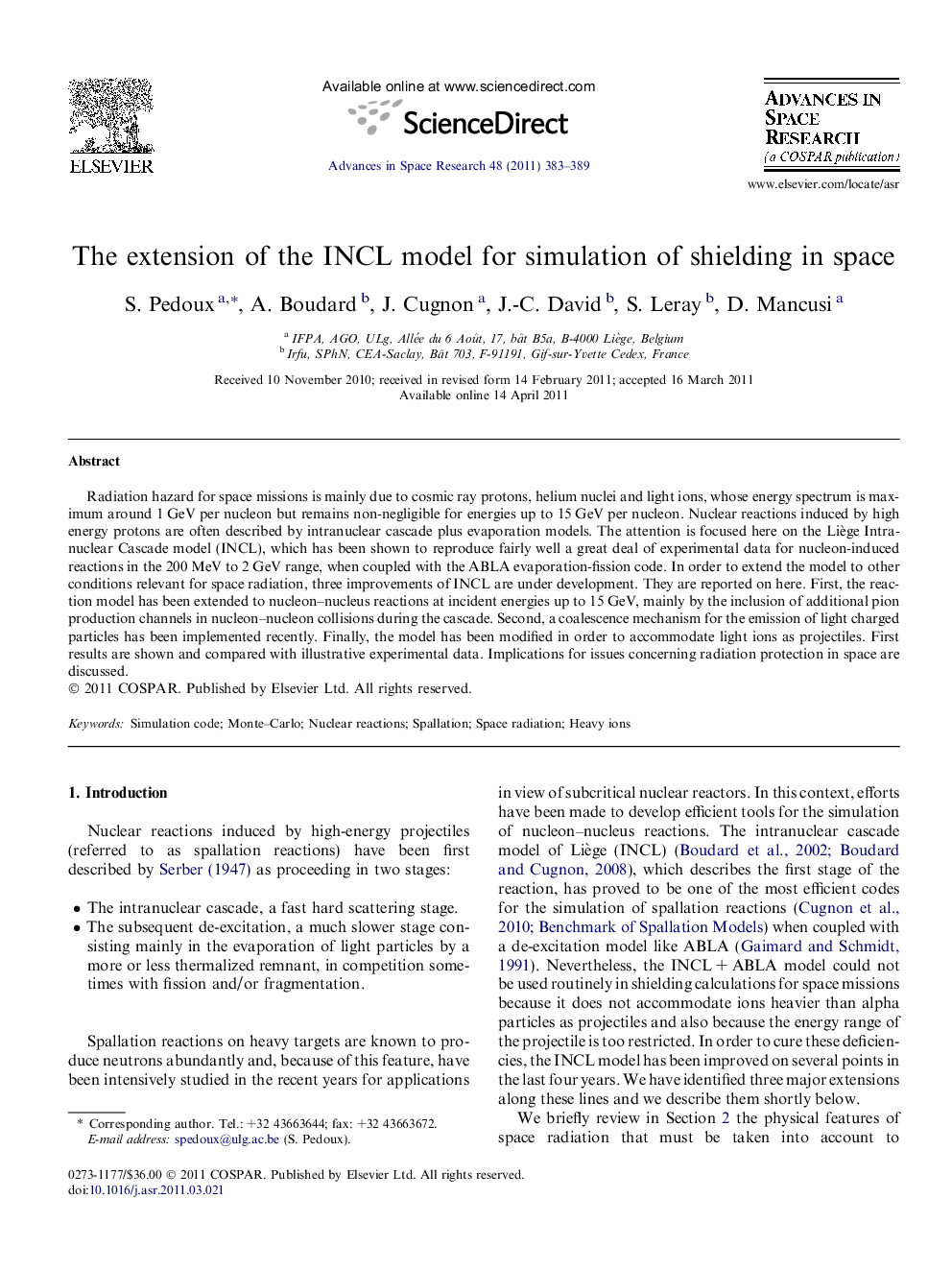| کد مقاله | کد نشریه | سال انتشار | مقاله انگلیسی | نسخه تمام متن |
|---|---|---|---|---|
| 1765931 | 1020126 | 2011 | 7 صفحه PDF | دانلود رایگان |

Radiation hazard for space missions is mainly due to cosmic ray protons, helium nuclei and light ions, whose energy spectrum is maximum around 1 GeV per nucleon but remains non-negligible for energies up to 15 GeV per nucleon. Nuclear reactions induced by high energy protons are often described by intranuclear cascade plus evaporation models. The attention is focused here on the Liège Intranuclear Cascade model (INCL), which has been shown to reproduce fairly well a great deal of experimental data for nucleon-induced reactions in the 200 MeV to 2 GeV range, when coupled with the ABLA evaporation-fission code. In order to extend the model to other conditions relevant for space radiation, three improvements of INCL are under development. They are reported on here. First, the reaction model has been extended to nucleon–nucleus reactions at incident energies up to 15 GeV, mainly by the inclusion of additional pion production channels in nucleon–nucleon collisions during the cascade. Second, a coalescence mechanism for the emission of light charged particles has been implemented recently. Finally, the model has been modified in order to accommodate light ions as projectiles. First results are shown and compared with illustrative experimental data. Implications for issues concerning radiation protection in space are discussed.
Journal: Advances in Space Research - Volume 48, Issue 2, 15 July 2011, Pages 383–389